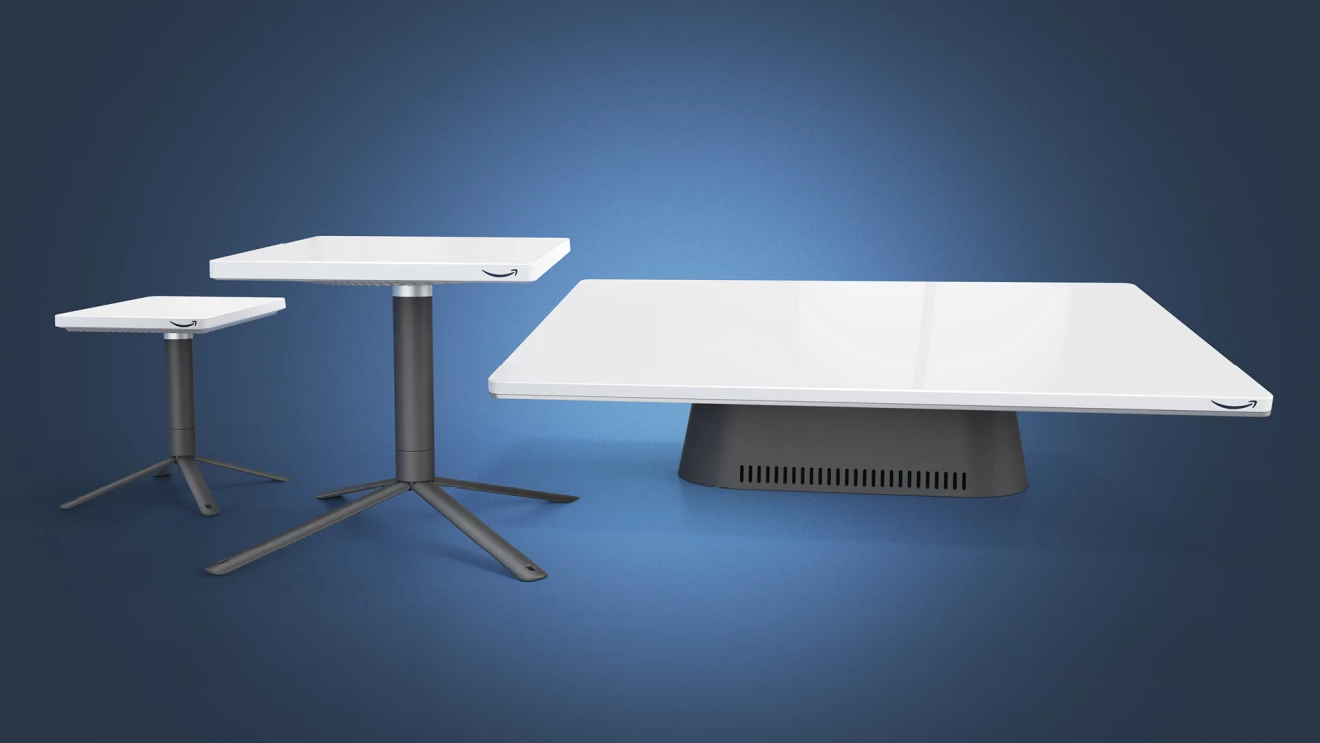 EMERGING TECH
EMERGING TECH
 EMERGING TECH
EMERGING TECH
 EMERGING TECH
EMERGING TECH
Amazon.com Inc. today introduced three antenna modules that will enable users to connect to its Project Kuiper satellite network.
Project Kuiper is an Amazon initiative that seeks to deploy thousands of internet satellites in low Earth orbit. Once operational, the network will be capable of providing wireless connectivity in regions with limited terrestrial internet infrastructure. Amazon has stated that it expects to invest more than $10 billion in the initiative.
“Our goal with Project Kuiper is not just to connect unserved and underserved communities, but also to delight them with the quality, reliability and value of their service,” said Rajeev Badyal, vice president of technology for Project Kuiper. “From day one, every technology and business decision we’ve made has centered on what will deliver the best experience for different customers around the world, and our range of customer terminals reflects those choices.”
Currently, consumer devices such as handsets can’t connect to internet satellites directly. They have to send data traffic to a specialized antenna that then forwards the information to space. The new antenna modules, or customer terminals, that Amazon detailed today address that requirement.
Amazon’s engineers have developed three customer terminals for connecting to Project Kuiper satellites. According to the company, all three devices are powered by an internally developed chip dubbed Prometheus. A version of Prometheus will also be installed in Project Kuiper satellites to help process data traffic.
Amazon’s entry-level customer terminal is a portable, rectangular device with a surface area of seven square inches. It can be deployed on rooftops using a specialized mount. Amazon says that the device will provide up to 100 megabits per second of bandwidth.
The company says that its entry-level customer terminal supports multiple use cases. According to Amazon, the antenna will provide an affordable way for consumers to access Project Kuiper broadband services. Enterprises, in turn, can use the antenna to provide internet access for connected devices at remote locations.
Amazon’s second customer terminal is geared towards residential and small business customers. It provides up to 400 megabits per second of bandwidth, or four times more than the entry-level antenna. Amazon stated that the device costs less than $400 to manufacture.
The most advanced of the three customer terminals the company detailed today is also the largest. It measures 19 by 30 inches and can provide connection speeds of up to 1 gigabit per second. The device is designed for use by enterprises, public sector organizations and telecommunications providers.
Amazon detailed the antennas today at a satellite event in Washington, D.C., where executives also provided an update about the Project Kuiper internet constellation.
Amazon plans to begin mass-producing Project Kuiper satellites by year’s end. Manufacturing is set to take place at a production facility the company is currently building in Kirkland, Washington. The first production-ready satellites are scheduled to launch in 2024 and are expected to start providing internet services to early customers later that year.
Support our mission to keep content open and free by engaging with theCUBE community. Join theCUBE’s Alumni Trust Network, where technology leaders connect, share intelligence and create opportunities.
Founded by tech visionaries John Furrier and Dave Vellante, SiliconANGLE Media has built a dynamic ecosystem of industry-leading digital media brands that reach 15+ million elite tech professionals. Our new proprietary theCUBE AI Video Cloud is breaking ground in audience interaction, leveraging theCUBEai.com neural network to help technology companies make data-driven decisions and stay at the forefront of industry conversations.